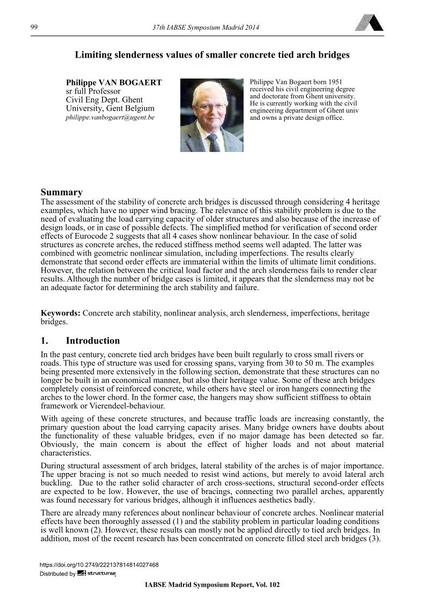Limiting slenderness values of smaller concrete tied arch bridges

|
|
|||||||||||
Détails bibliographiques
| Auteur(s): |
Philippe Van Bogaert
|
||||
|---|---|---|---|---|---|
| Médium: | papier de conférence | ||||
| Langue(s): | anglais | ||||
| Conférence: | IABSE Symposium: Engineering for Progress, Nature and People, Madrid, Spain, 3-5 September 2014 | ||||
| Publié dans: | IABSE Symposium Madrid 2014 | ||||
|
|||||
| Page(s): | 99-106 | ||||
| Nombre total de pages (du PDF): | 8 | ||||
| Année: | 2014 | ||||
| DOI: | 10.2749/222137814814027468 | ||||
| Abstrait: |
The assessment of the stability of concrete arch bridges is discussed through considering 4 heritage examples, which have no upper wind bracing. The relevance of this stability problem is due to the need of evaluating the load carrying capacity of older structures and also because of the increase of design loads, or in case of possible defects. The simplified method for verification of second order effects of Eurocode 2 suggests that all 4 cases show nonlinear behaviour. In the case of solid structures as concrete arches, the reduced stiffness method seems well adapted. The latter was combined with geometric nonlinear simulation, including imperfections. The results clearly demonstrate that second order effects are immaterial within the limits of ultimate limit conditions. However, the relation between the critical load factor and the arch slenderness fails to render clear results. Although the number of bridge cases is limited, it appears that the slenderness may not be an adequate factor for determining the arch stability and failure. |
||||
